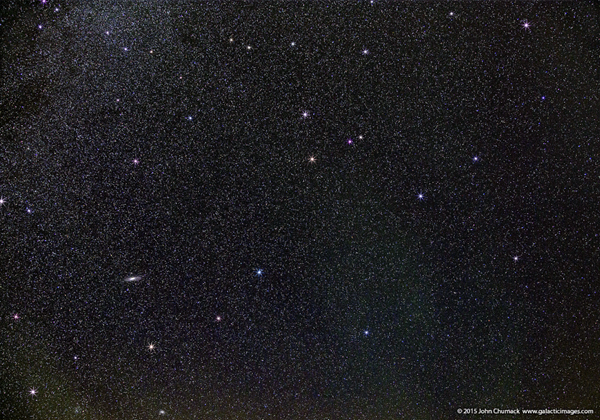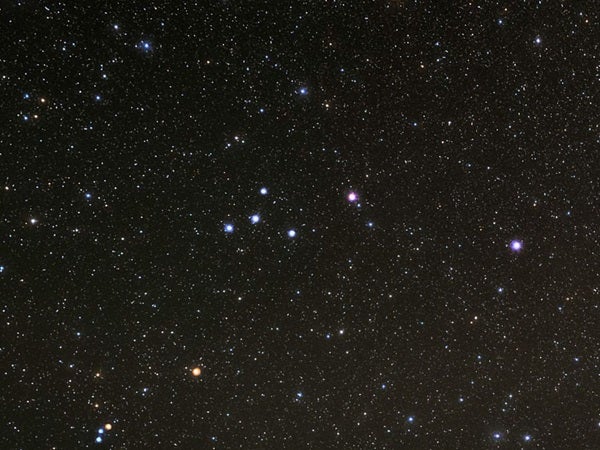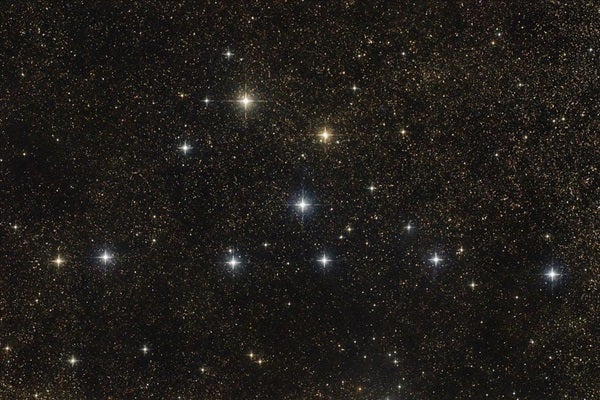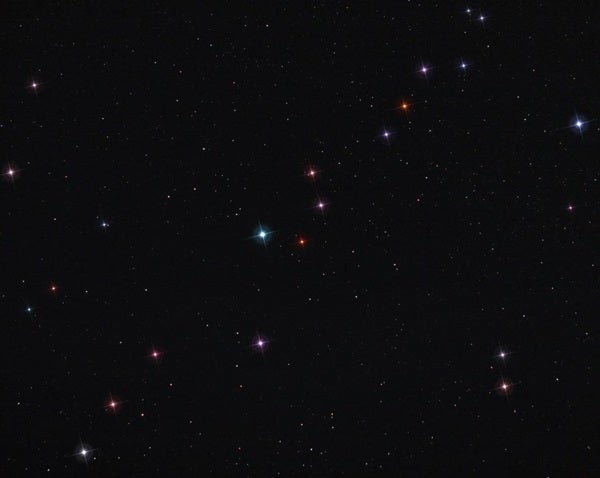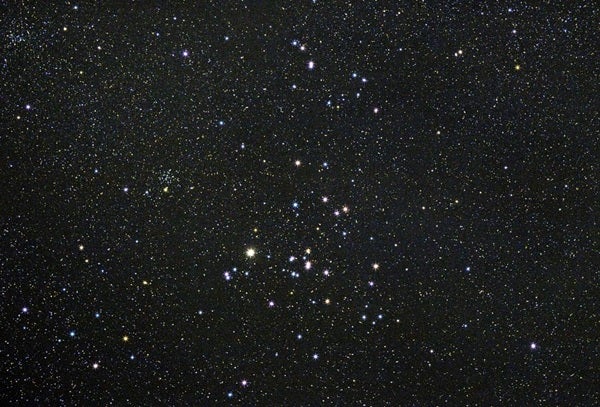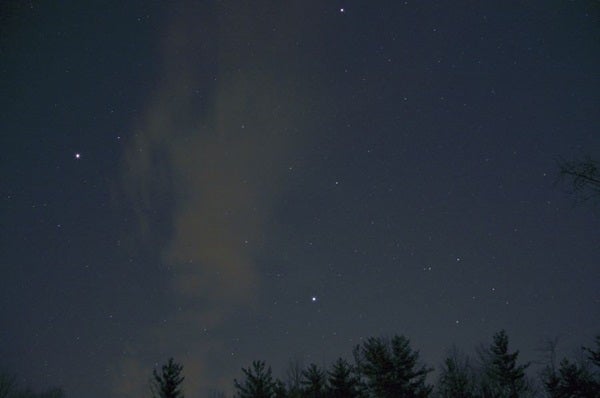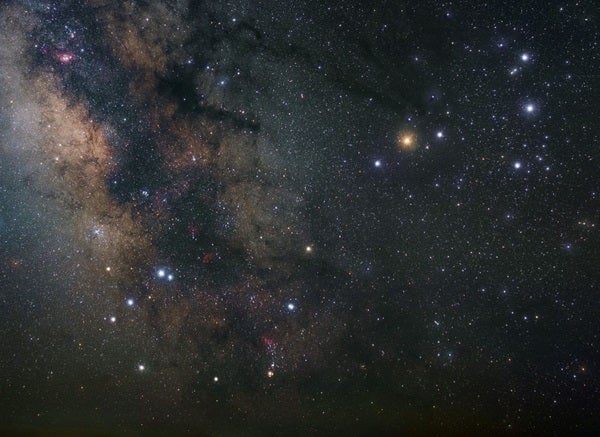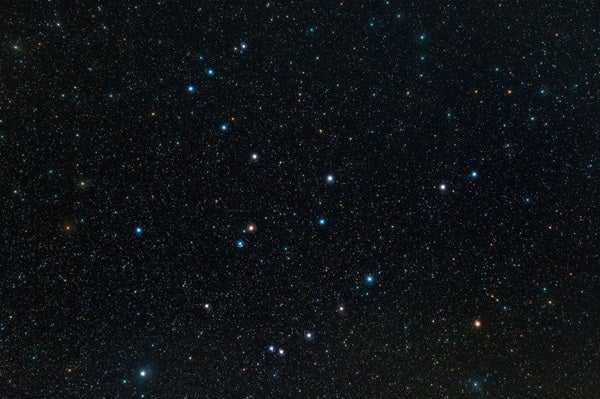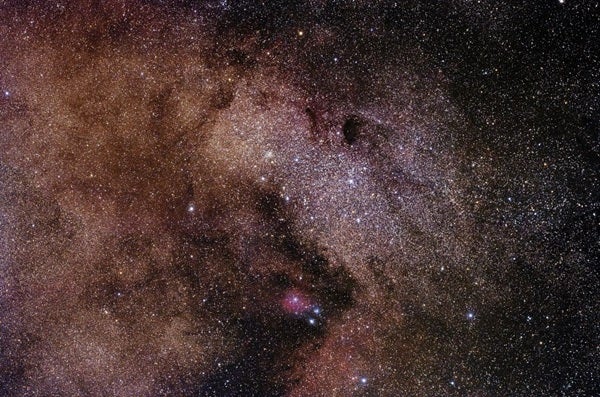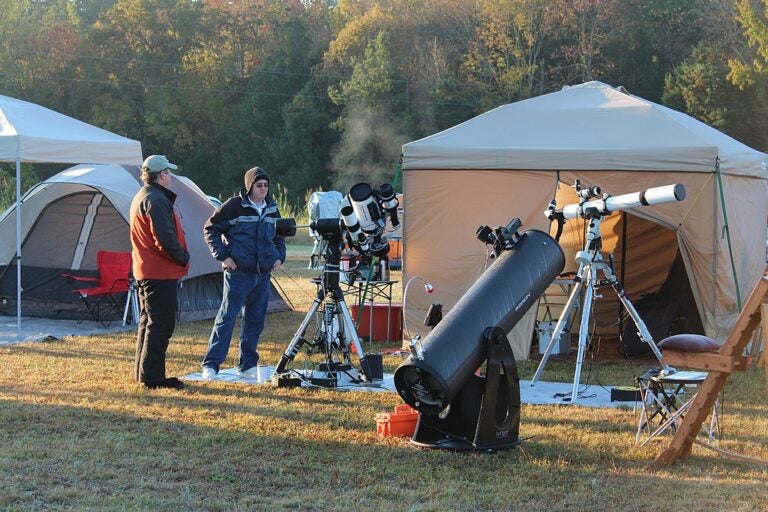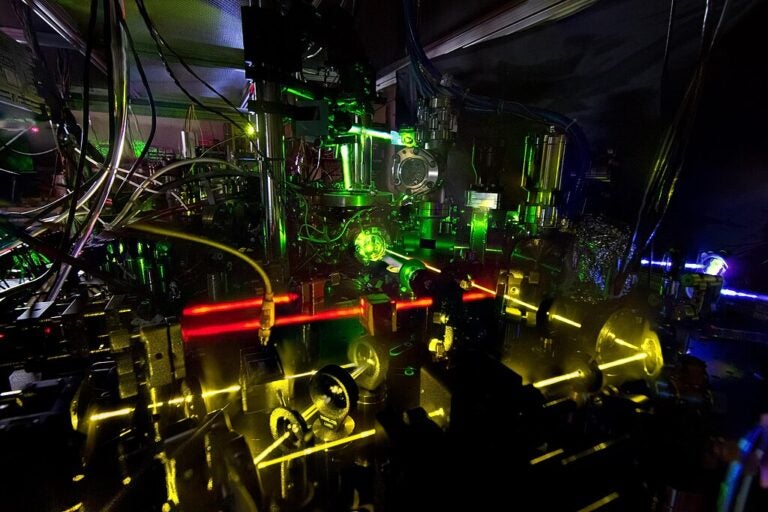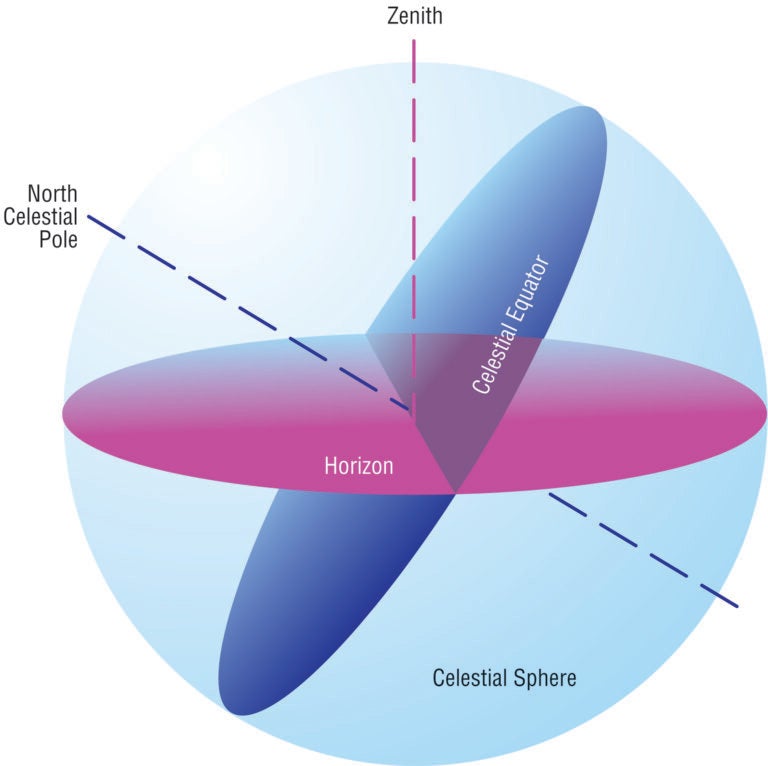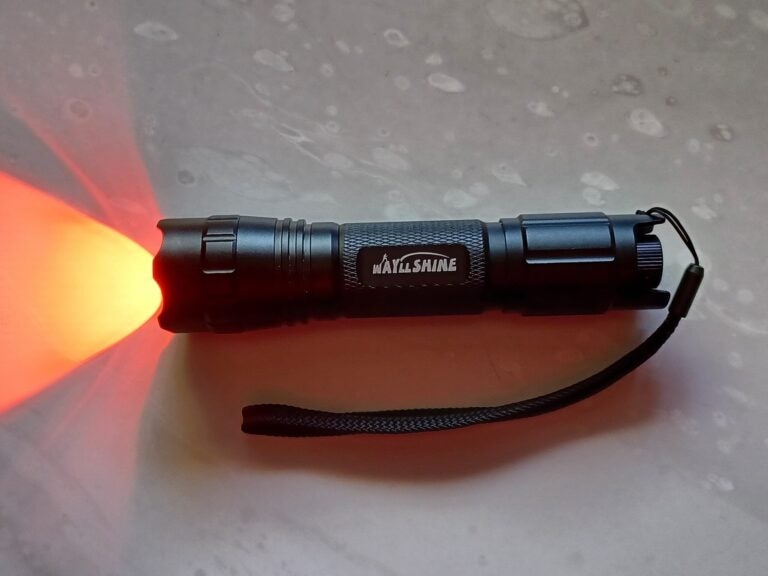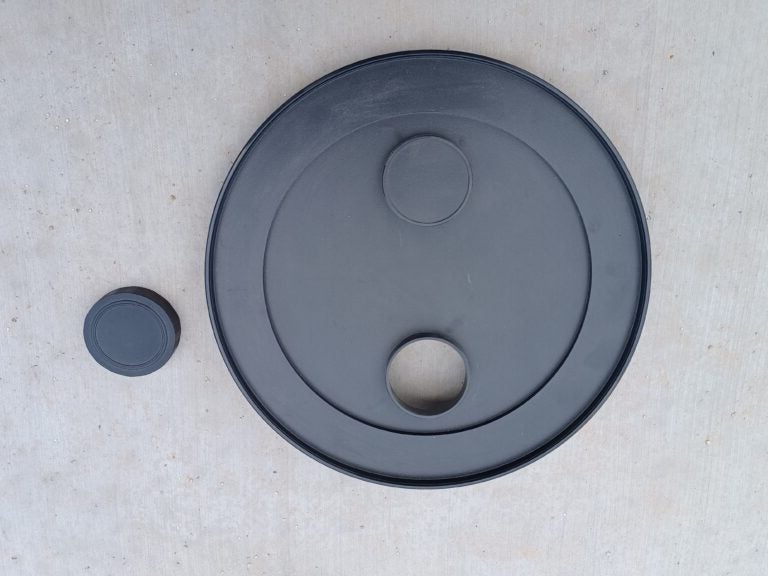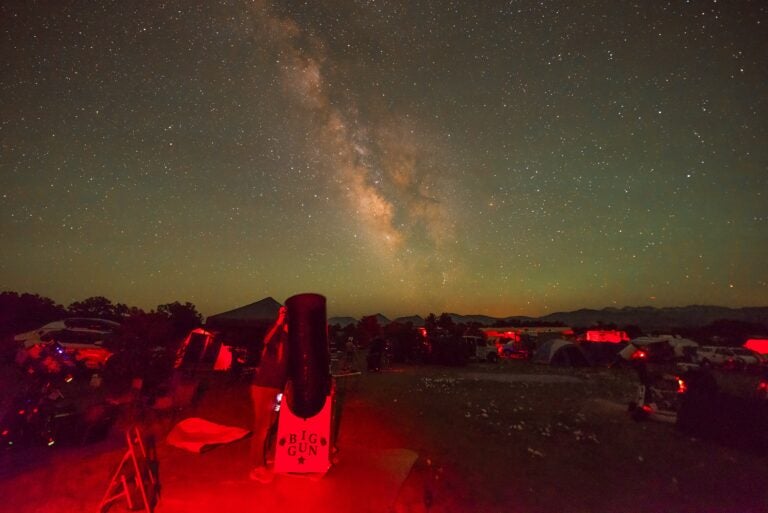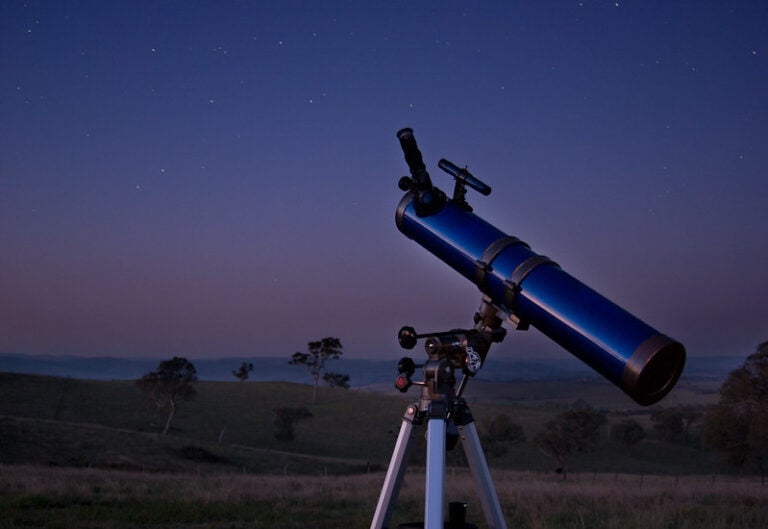In that year, Belgian astronomer Eugène Joseph Delporte, the head of a commission of the International Astronomical Union, formalized the number of constellations in the sky (88), as well as their boundaries. His report was published in 1930 as Délimitation Scientifique des Constellations (Scientific Demarcation of the Constellations).
Asterisms may belong to a single constellation, or they may use stars from several. As you’ll also discover when you head outdoors to find these patterns, many asterisms are easier to find than most of the constellations. My list includes naked-eye, binocular, and telescopic asterisms visible from the Northern Hemisphere. To make things easier, I’ve divided them into seasonal groupings, beginning with fall.
This is easy observing, the kind that you can share with non-astro family members and friends. Not only will they immediately see the patterns (especially the naked-eye ones), they’ll also enjoy hearing any stories you tell about them. So, head outside the next clear night and have some fun.
In the fall sky
The first asterism is an easy one to find. It’s the Great Square of Pegasus. That’s kind of a strange name considering only three of its stars — Markab (Alpha [α] Peg), Scheat (Beta [β] Peg), and Algenib (Gamma [γ] Peg) — belong to the constellation Pegasus. The remaining star, Alpheratz, is the Alpha star in Andromeda. Still, the four do make a striking square.
If you have a problem calling this asterism “of Pegasus,” then picture it as the Baseball Diamond. In this case, Beta Peg becomes home plate, Alpha And is first base, and so on. You can even imagine a pitcher, catcher, many outfielders, and stands full of fans — every one a star!
To find the next asterism, head due south. Although the Circlet of Pisces falls within the naked-eye category, its stars are much fainter than the ones in the Great Square. They are Gamma, 7, Theta (θ), Iota (ι), 19, Lambda (λ), and Kappa (κ) Piscium. Of these, Gamma is the brightest, shining at magnitude 3.7.
The Circlet marks the head of the western fish in this constellation. A cord leads east to Alrescha (Alpha Piscium), and another heads northward to the eastern fish, which, unfortunately, isn’t nearly as easy to spot as the one marked by the Circlet.
Proceed west about twice the diameter of the Circlet, and you’ll arrive at the Water Jar in the constellation Aquarius. It appears as a triangle with a central point. The four stars are Gamma, Eta (η), Pi (π), and Zeta (ζ) Aquarii. The central star, Zeta, is a double star made of Zeta1 Aqr (magnitude 4.4) and Zeta2 Aqr (magnitude 4.6), which combine to make the star’s apparent magnitude 3.7. Many early celestial cartographers pictured a stream of water flowing out of the Water Jar and into the mouth of Piscis Austrinus the Southern Fish.
Now head northwest about one-quarter of the way across the sky and find Albireo (Beta Cygni). It’s the 3rd-magnitude double star that’s the head of Cygnus the Swan. From it, draw a line 3° to the south to Anser (Alpha Vulpeculae), which glows at magnitude 4.4. Continue that line another 4½°, and you’ll find the Coathanger. Although you can spot this stellar gathering with just your eyes, it looks best through binoculars.
Ten of the Coathanger’s stars rise above 7th magnitude. The brightest are 4 Vulpeculae (magnitude 5.1), 5 Vul (magnitude 5.6), and 7 Vul (magnitude 6.3). The combined magnitude of all the Coathanger’s stars is 3.6, but it’s not bright because the light is spread across an area 1° wide. Swedish astronomer Per Arne Collinder included this group as No. 399 in a catalog of 471 open clusters he compiled. For that reason, the Coathanger carries the designation Collinder 399.
Unlike the Coathanger’s stars, the three in the Kids stand out nicely. In order of brightness, they are Almaaz (Epsilon [ε] Aur) at magnitude 3.0, Haedus (Eta Aur) at magnitude 3.2, and Sadatoni (Zeta Aur) at magnitude 3.8.
Look southwest of the Kids in the northern part of the constellation Aries the Ram for a much fainter triangle-shaped asterism, the Northern Fly. It lies north of the midway point along a line from the Pleiades (M45) to Hamal (Alpha Arietis). Its three stars weren’t assigned Greek letters. Instead, they carry the Flamsteed numbers 35, 39, and 41 Arietis.
The next fall asterism, Kemble’s Cascade, lies north of Perseus in the constellation Camelopardalis. Because it’s 2.5° long, it looks best through binoculars — that’s how its discoverer, amateur astronomer Lucian Kemble, found it.
A magnification of 15x works best for framing the 15 stars in this starry chain. The easiest way to find the Cascade is to locate its brightest star, 5th-magnitude SAO 12969, that sits in the center. The other stars glow between 7th and 9th magnitudes on either side of it.
If you see a subtle glow at the southeast end of the Cascade, you’ve found the Jolly Roger Cluster (NGC 1502), an open cluster that glows at magnitude 5.7.
Our last fall asterism is big and bright: the Segment of Perseus. Various sources include different stars, but the most frequently mentioned are, in order, Eta, Gamma, Alpha (named Mirfak), Psi (ψ), and Delta (δ) Persei. Some writers state that the Segment was Perseus’ sword, which he used to decapitate the Gorgon Medusa. Most depictions of the constellation, however, place the sword well above the Segment, which falls within the hero’s body.
In the winter sky
Because Orion the Hunter is the most prominent constellation in the sky, it contains lots of asterisms originating from all over the world. Many use the same three bright stars in the Belt. Starting at the northernmost one, they are Mintaka (Delta Orionis, magnitude 2.3), Alnilam (Epsilon Ori, magnitude 1.7), and Alnitak (Zeta Ori, magnitude 1.7).
This straight-line trio is also known as the Rake and the Three Kings. If you include the stars Eta and Iota Orionis, the four-sided asterism called Venus’ Mirror appears.
Orion also holds a fun telescopic asterism: 37. It’s the brightest stars of the open cluster NGC 2169, which is the southern tip of an isosceles triangle with Xi (ξ) and Nu (ν) Orionis as the other points. NGC 2169 lies less than 1° from each star. If your observing site is dark, you might spot NGC 2169 as a faint glow with your naked eyes.
Point a telescope at the cluster and use low power to see the number 37. Actually, the letters LE are a bit easier to visualize. To successfully see the 37, your field of view should have north up and east to the left.
When you’re done viewing the 37, step away from your scope and draw a line a bit more than 20° long up (northwest) from the Belt, where you’ll encounter the V of Taurus. This letter’s eastern tip is Aldebaran (Alpha Tauri), the ruddy eye of Taurus the Bull. The other stars are Theta, Gamma, Delta, and Epsilon Tauri.
The fainter stars of this asterism are part of the Hyades star cluster. Aldebaran, which lies some 90 light-years closer to us, is not.
The fainter stars of this asterism are part of the Hyades star cluster. Aldebaran, which lies some 90 light-years closer to us, is not.
Our final winter-sky asterism is Pakan’s 3 in the constellation Monoceros. You’ll find it about 3° southwest of the open cluster M50, or 2° north of 4th-magnitude Theta Canis Majoris. I have been able to identify this asterism through 18×50 binoculars, but a telescope will guarantee success.
The 11 stars of Pakan’s 3 range from magnitude 8.5 (SAO 133838) to magnitude 9.5 (SAO 152034). From top to bottom, it spans exactly 0.5°.
In the spring sky
The first vernal asterism that you should probably find is the Spring Triangle, a giant figure pulled straight out of a geometry class. It’s visible in the Northern Hemisphere all through spring, and three bright stars make up its points.
First is Arcturus (Alpha Boötis), the brightest star in the northern sky and fourth-brightest overall. It shines with an orange hue at magnitude –0.04. From Arcturus, move to sapphire-blue Spica (Alpha Virginis), which represents a sheaf of grain (probably wheat) in Virgo the Maiden’s hand.
Spica varies in brightness between magnitude 0.92 and 1.04, with a period of a bit more than four days. Finally, complete the Spring Triangle with Denebola (Beta Leonis), the tail of Leo the Lion. Denebola, at magnitude 2.1, is the sky’s 59th-brightest star, which is fairly notable considering human eyes can detect roughly 6,000 stars.
Next up is the Head of Hydra, which lies on the western end of the sky’s largest constellation. To find it, look 2° south of the midpoint of a line that joins Procyon (Alpha Canis Minoris) and Regulus (Alpha Leonis).
Six stars form this asterism. The brightest is magnitude 3.1 Zeta Hydrae. From there, move west to Epsilon and Delta Hydrae. Then, swing back east to Rho (ρ) Hydrae. Drop 3.5° southwest to Sigma (σ) Hydrae. At magnitude 4.4, this is the faintest star in the asterism. Head east again to the sixth and final star, Eta Hydrae, then finish the figure by returning to Zeta.
Now turn your gaze a third of the way across the sky to the north. There, through binoculars, you’ll find the Broken Engagement Ring. It lies 1.5° west of Merak (Beta Ursae Majoris), one of the Pointer stars of the Big Dipper.
The Ring’s brightest star, SAO 27788, which glows at magnitude 7.5, lies at its northern end. It’s the diamond in the ring. Unfortunately, the other stars, which lie south and west, don’t give off that much light. The second-brightest glows at magnitude 9.1, and the faintest is magnitude 9.9, which makes it only one-ninth as bright as SAO 27788.
The Broken Engagement Ring isn’t tiny. It spans 16′, which is half the diameter of the Full Moon. The best views will be through 10x or higher binoculars, or through telescopes with eyepieces that provide a field of view a bit wider than a quarter degree.
Our next spring sky asterism, the Y of Virgo, ranks as the largest in a single constellation — but just barely. Its longest dimension beats that of the Big Dipper by 1°. The Y contains six stars, and they all have common names, which indicates that they’re fairly bright. Indeed, the faintest glows at magnitude 3.9.
But we begin the Y at its bottom with its brightest star, Spica (Alpha Virginis), a blue-white sparkler. From it, move 15° northwest to Porrima (Gamma Vir). There, the Y branches in two directions, toward the north-northeast and the west-northwest. The north-northeast leg contains Minelauva (Delta Vir) and Vindemiatrix (Epsilon Vir). The west-northwest branch contains Zaniah (Eta Vir) and Zavijava (Beta Vir).
Moving from the very large to the very small, point your telescope 12° due west of Spica to find the Stargate in the constellation Corvus. It lies midway between Delta Corvi and Chi (χ) Virginis, and it consists of two triangles of stars, one within the other. The outer one measures roughly 5′ on a side, while the sides of the small one each span less than 1′.
You can spot the outer triangle through binoculars — well, two of its stars, at least. They glow at magnitudes 6.6 and 6.7, and the third is much fainter, at magnitude 9.9. The three inner stars are more subtle: magnitudes 8.0, 9.7, and 10.6. The best views come through a 4-inch or larger scope with an eyepiece that gives a magnification of about 50x.
In the summer sky
We’ll start our final season’s asterisms with a telescopic one in the northern sky — so far north, in fact, that it’s visible in every season. It’s the Mini Coathanger in Ursa Minor. Astronomy Contributing Editor Phil Harrington gave it this name because it looks like the more famous Coathanger, which I described earlier.
The Mini Coathanger is made of 10 faint stars that lie 2° south-southwest of Epsilon Ursae Minoris. The brightest is magnitude 9.2 SAO 2721 (magnitude 9.2), while the faintest is GSC 4574:802 (magnitude 10.8). From its hook to its base, the Mini Coathanger measures 9′. The base, at 17′, is nearly twice that length.
Our next asterism is a naked-eye object called the False Comet. It lies near the bottom of the tail of Scorpius. To see it well, you’ll need a dark sky. British astronomer Sir John Herschel christened this region the False Comet during his stay in South Africa in the 1830s. He could have named it that because, with a quick glance, it resembles a comet. However, I think he named this asterism after False Bay, the place where his ship first touched land in South Africa.
To find the False Comet, start 0.5° north of Zeta Scorpii. There, you’ll spot the Northern Jewel Box (NGC 6231). At magnitude 2.6, this is the sky’s sixth-brightest open cluster. Now just make a 4º-long line north to the double star Mu (μ) Scorpii. Open clusters other than NGC 6231 along that line are magnitude 3.4 Collinder 316, magnitude 8.6 Trumpler 24, and magnitude 6.4 NGC 6242. Taken together, these clusters and the stars around them give the impression of a comet.
When you’re done with the False Comet, head due north through the massive constellation of Ophiuchus to Hercules. There you’ll find four medium-bright stars that mark the Keystone. Traditionally, a keystone is the wedge-shaped piece that locks an arch into place. This one lies two-thirds of the way from Arcturus to Vega (Alpha Lyrae).
The Keystone is big: 7.5° by 5.5°. The brightest of its stars, magnitude 2.8 Zeta Herculis, sits at the southwestern corner. Head 7° north to find magnitude 3.5 Eta Herculis at the northwestern corner. Continue eastward 6.5°, where magnitude 3.2 Pi Herculis marks the northeastern corner. Lastly, you’ll find magnitude 3.9 Epsilon Herculis at the southeastern corner.
For an added bonus, if your site is dark, look one-third of the way from Eta to Zeta for what might appear to be an out-of-focus star. That is the Hercules Cluster (M13), one of the northern sky’s best globulars. Binoculars will show it better than the naked eye, but the best views are through telescopes of all sizes.
If you start at the middle of the Keystone and head 20° north and just a bit east, you’ll encounter an easy-to-see asterism called the Lozenge, which marks the head of Draco the Dragon. It lies at the midway point on a line between Vega and Kochab (Beta Ursae Minoris).
Four stars form the Lozenge, which looks less like a trapezoid and more like a crooked rectangle. The brightest is Eltanin (Gamma Draconis) at magnitude 2.2. From it, move west to find Rastaban (Beta Dra), then head north for Kuma (Nu Dra), and finally northeast for Grumium (Xi Dra).
The final target in our asterism hunt, the Small Sagittarius Star Cloud (M24), is kind of an odd duck because it’s a Messier object that shouldn’t really be one. Why Charles Messier put this star cloud (one of many in this rich region of the Milky Way) on his list remains a mystery to this day.
M24 lies 3° due north of Mu Sagittarii, and it’s not small or faint. It measures 95′ by 35′ and glows at magnitude 2.5. Without question, 10x and higher binoculars provide the best views.
Finding asterisms in the night sky is fun and easy. And it offers you some creativity. Don’t like the Great Square? Make it a Great X. Not happy calling Draco’s head the Lozenge? Turn it into a Klingon battle cruiser. No asterism is an official pattern, so you’re free to invent your own. Good luck!

